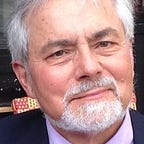Pleasures & Perils of Writing Non-Fiction, Post #6
In Post #5, I discussed sequencing of the information you’ve collected. Let’s stay with that.
In my experience, note-taking is a foundational ability of efficient and effective non-fiction writing. “Note-taking” refers to the intermediate step between locating factual information on the one hand and drafting your book on the other.
For me, the purpose of note-taking is realized while I’m making decisions about sequencing and while I’m drafting my book. During these phases, I shouldn’t need to reach for any of my sources — books, articles, etc. — because my notes prove sufficient. That’s an ideal worth striving for. Here’s why:
Books are awkward! Maybe not awkward when you’re reading them, but terribly awkward to use as sources of information in which you need to find a passage after you’ve started drafting your book. Books must continually be forced to remain open to a particular page while you copy or paraphrase information. Copies of journal articles stay open more easily, but they’re also multipage documents in which a specific paragraph is elusive. Physically wrangling sources is a distracting, time-wasting activity that you do not want to interrupt your concentration during sequencing and drafting.
Again, I realize that I’m revealing myself as old-fashioned. No doubt, young writers of non-fiction, those who grew up using computers, have figured out how to accomplish all the steps I’m describing on a screen — no physical books or articles needed, thank you very much. I can’t imagine how that’s done efficiently, but more power to them!
But for those non-fiction writers who, like me, prefer to work with physical books, I’m recommending a product. (Does this make me an influencer?) It’s for the note-taking stage, when a book must be held open to a certain page while you extract the details you want. See the photo of my Levō Book Platform #33701, held in place by my Levō Table Clamp #33764. It’s made my note-taking activities FAR easier! Visit www.bookholder.com.
In Post #5, I suggested that each note should deal with one set of closely interrelated facts, include the citation, and reside on one sheet of paper. Let me expand on that advice.
First, “include the citation”: There’s no need to type the full citation on each note. You need only two or three words to remind you of its source: Smith 2014, 78–80.
Next, “set of closely interrelated facts”: When I type a note, I paraphrase the source. My goal isn’t to be creative; it’s to streamline my upcoming sequencing and drafting processes. Paraphrasing is good enough. BUT if I foresee that I might want to quote the author, I painstakingly copy their sentences (and indicate this for my own future reference).
This way of generating notes served me well through three books. For my new project, I’m trying something different.
What hasn’t changed is my resolve to handle only pieces of paper, not books, during my sequencing and drafting processes. What’s different is that I type more than one paraphrase-plus-citation onto each note page, thus reducing the number of note pages that I must shuffle around during sequencing and drafting. For this to work, I must identify each note page with one broad category of experience about which I expect several sources to supply information.
For example, currently I’m writing a chapter about Navajo child-rearing. Within that chapter, one broad category I’ll discuss is birth and infant care. To prepare for writing about that, I’ve made individual note pages with headings such as “pregnancy/giving birth,” “cradleboards,” “care prior to weaning,” “care after weaning,” and so forth. On each page, I collect paraphrases from several sources.
